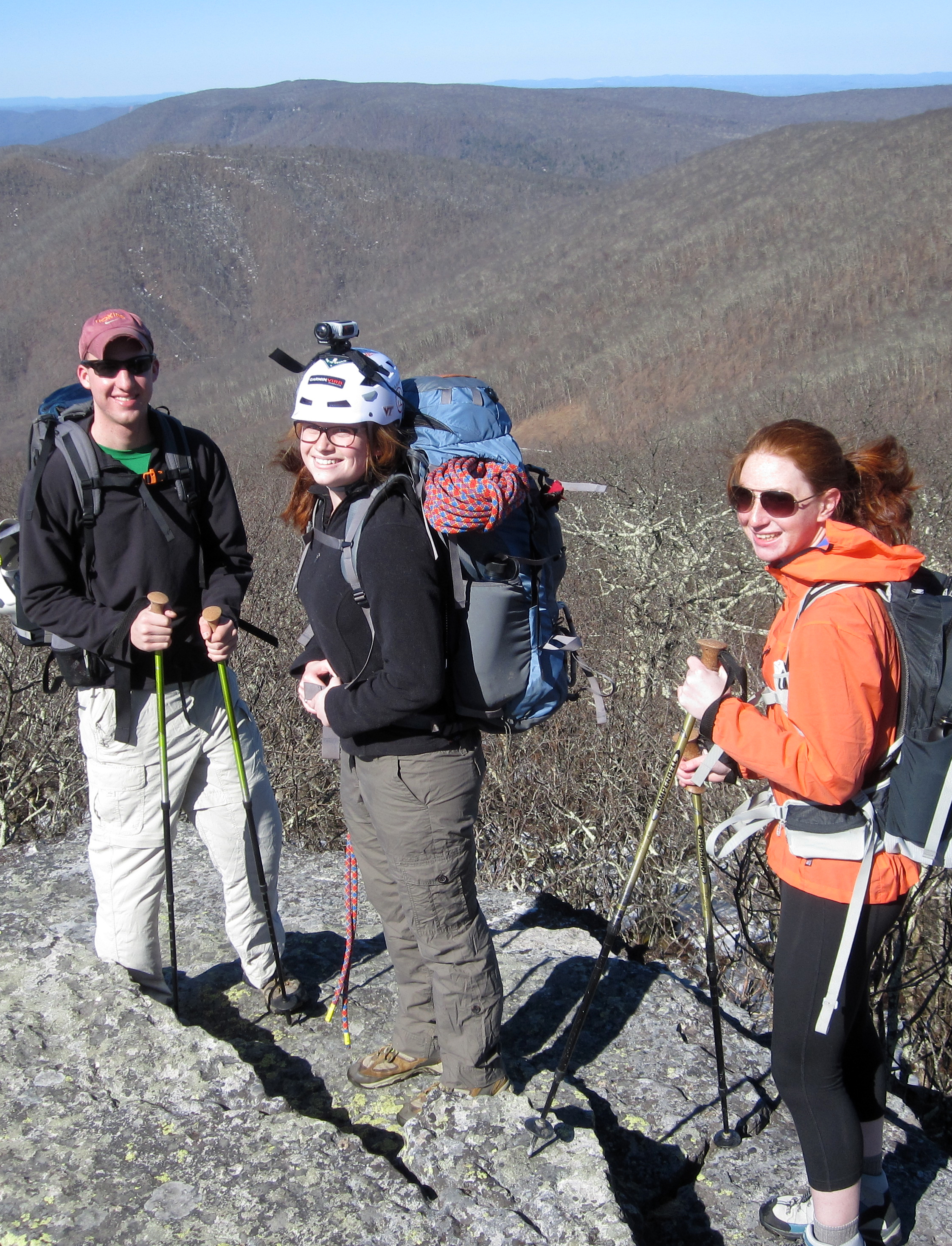Research field experience will take students to highest peaks of North, South America

Geography, meteorology, and wildlife science students in Virginia Tech’s College of Natural Resources and Environment are preparing for courses to “climb peaks that scrape the sky,” in the words of geography instructor David Carroll.
This summer, Carroll and Lynn Resler, associate professor of geography, are running a new field course to the Cascade Mountains of Washington state, where the students will conduct alpine environment studies and be trained in safe alpine wilderness travel techniques, including glacier travel and crevasse rescue situations, through the American Alpine Institute.
“The Cascades field experience takes place at the rim of an active volcano amidst enormous mountains and glaciers with huge crevasses,” Carroll said. “This is different from any other field experience the university offers.”
Carroll specializes in meteorology while Resler’s focus is the dynamics of mountain environments. The goal of the mountain field course, offered for the first time by the Department of Geography, is to engage students in an intensive study of the landscape and weather of western North American mountain environments.
Students are currently attending a spring semester course to prepare for the trip, building a foundation of knowledge on the North Cascades environment as well as practicing physical training, cold-weather backpacking, and basic rope work and climbing skills.
“Our training will include some spectacular technical rock climbing on cliffs as high as 700 feet,” said Carroll.
Resler will be teaching students about the physical geography of the Cascade Mountains, particularly the 10,781-foot Mount Baker, prior to departure.
“That way when we get to the mountain, the students will have a basic knowledge of the physical geography of the region,” she said.
“During the summer field experience, the students will record weather variables, make notes about geomorphology and vegetation changes, and observe how these physical processes and properties change with elevation,” Resler added.
“When we return to Blacksburg, the students will compile their observations and photographs into a research poster summarizing changes in the mountain landscape along their path — from lower-elevation mountain forests and park lands to timberline and alpine ecosystems,” she continued. “Emphasis will be on learning about the uniqueness of the spectacular alpine environment through a rare field immersion experience.”
Their adventure on Mount Baker includes climbing the steep lateral moraine of the Easton Glacier known as the Railroad Grade, setting up a base camp near the timberline below the glacier, recording plant species and topographic features along the route, and then camping above the timberline on a spectacular rocky bench to be trained in roped team travel for the final ascent.
Weather permitting, the trip will culminate in a climb to the summit of Mount Baker. Beginning shortly after midnight, the team will rope up and climb via headlamp through the night, recording weather and GPS data as they ascend. They should reach the rim of the active Sherman Crater near daybreak and the summit of Mount Baker, the highest point in the North Cascades, early in the morning.
The students are expected to learn how complex mountain topography influences the dynamics of such physical systems as snow and ice, climate, plants, and animals over time and space, as well as the forces and events that formed Mount Baker.
They will gain exposure to natural resource challenges, including volcano hazards, associated with land management in the North Cascades and will observe volcanic landforms of the Black Buttes, old lava flows, and pyroclastic deposits.
“They will gain confidence in outdoor leadership and survival skills,” said Carroll.
The students will use navigation tools, from map and compass to modern GPS technology, for off-trail travel in backcountry areas. High-definition video cameras mounted on the helmets of two of the participants will record GPS location, elevation, air pressure, and temperature in addition to the spectacular views.
“The basic idea is to immerse the students in the study of the alpine and heavily glaciated environment of the North Cascades,” said Carroll. “As a part of the curriculum, we decided to add formal training in glacier travel and mountaineering in addition to the mountain and ecosystem studies.”
“The North Cascades provides an ideal environment for both,” he continued, “and the alpinism training will broaden the students’ skills and open up new territory for them that is beyond the reach of ordinary hiking and backpacking.”
The students and faculty members will return to the mountains in summer 2015 on a trip to South America to study and climb peaks that are among the highest in the world outside of the Himalayas — more than 20,000 feet.
“Our philosophy is also one of commitment,” said Carroll. “The students will prepare for an entire semester before the North Cascades trip, and the follow-up trip to the Andes raises the stakes even higher as it will require a year of preparation time.”
“The Andes Mountains course will provide students with the opportunity to study mountain environments in an international setting, one that is currently front-and-center in the effects of climate change on high altitude environments,” he added.
“These field courses represent a two-year journey for the students, and committing themselves to a long-term goal that spans years instead of weeks or even months is a valuable life skill in itself,” Carroll concluded.




